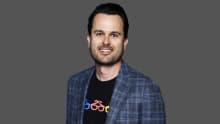The implications of ‘distributed workforce’ will be deep and wide: EXL's CHRO Nalin Miglani

Nalin Miglani is Executive Vice President and Chief Human Resource Officer. He is responsible for building a market-leading, client-centric workforce, growing and nurturing talent on a global scale. He was most recently the Chief HR and Corporate Development Officer for Nutreco, a $5 billion global leader in animal and fish nutrition, where he led the creation of a comprehensive framework for strategic execution and a new rewards strategy, among other initiatives.
Nalin also served as the Chief HR and Communication officer for the $1.5 billion Tata Global Beverages Company, where he focused on organizational design and cultural transformation. He also held various global and regional HR leadership roles around the world during a 10-year career at The Coca-Cola Company.
Here are the excerpts of the interview.
What does the COVID-19 triggered 'big reset' mean for you? Is it about the increased focus on agility, adaptability, and sustainability of businesses?
The “big reset" is about organization of work.
A distributed workforce replaces an aggregated workforce. This distribution is an outcome of the de-coupling of location from work. People at work vs People in office.
Post-COVID-19, the distribution of the workforce has gone mainstream. The implications are deep and wide. Every principle of management and organization that we lived by for decades is up for a complete re-frame.
Management, leadership, and organization will now be heavily directed by technology and data.COVID-19 seems to be accelerating digital transformation in the workplace across industries. Do you see a new tech infrastructure in the making that will help economies rebound after COVID-19?
A new tech infrastructure that will reshape the workplace is certainly in the making. And, yes, it will help economies rebound into a different era of value creation. I would not like to call it the much-awaited arrival of the “Fourth Industrial Revolution”, because there will be very little “industrial” about the new world. But, “revolution” is somewhat accurate.
Communication and collaboration technologies have the potential to transform how work is done. This will have a clear impact on how urban centers are organized and how individuals live their daily life. All of this is up for a real change.
The impact on the economy will be positive because work will reach the best talent at the right price. Economic inefficiencies created by congested urban workplaces will be mitigated. New companies that attempt to influence this change will bring innovation and greater value creation. People, “free to work in their own space”, will be more productive and fulfilled when each day is not lived under the shadow of strong hierarchies of management.
How do you see the larger HR landscape evolve in 2021 and how should talent leaders reimagine workforce management in 2021?
As HR leaders re-imagine workforce management in 2021 and beyond, they may want to learn to be successful with these four trends:
The “Platformization of HR”. HR will be less about “walking the floors” and more about delivering leadership, services, engagement, and capability development through digital channels. All these channels will need to a: be inter-connected at the front end and b: have the power to deploy smart analytics on the data that these channels provide.
To work in a platformized HR function, HR leaders’ “listening skills” will have to migrate from individual voices and corridor conversations to analyzing aggregated data and ‘listening’ to patterns of feedback.
HR leaders will need to learn “product development” principles to ensure that their digital applications follow the principles of great user experience and reflect the character of the leadership team.
And, finally, new COEs such as Data & Analytics and User Experience will make their way into HR organizations.
Can you throw some lights on how top organizations are leveraging HR tech Ð people analytics, talent acquisition tech, RPA, and blockchain?
As we all know, HR tech is one of the fastest areas of entrepreneurial growth. There are several examples of how tech is being leveraged.
- Capability Development: Tech is expanding sources of learning, making it available on tap, location agnostic and above all, enabling the learner to contribute to the creation of knowledge and not just be a consumer.
- Collaboration: Is a big winner of digital tech. Boundaries of time zones are broken. Contribution is real-time and transparent. Visually appealing and tactile user interface encourages high engagement.
- Communication: Leaders can “accessorize” their communication. They can build true followership based on content and appeal – not just on the level. Feedback is quick and clear. And, it is all multi-media!
While there are many applications, the current winner is platform-based tech that seamlessly integrates communication, collaboration, and integrated data management. And wait for VR. It will be mainstream before you know it.
With the increasing role of tech innovations, do you think firms may consider the outright replacement of workers with technology? Where do you see this man-machine equation in the near future?
Economic growth only happens when there is productivity growth. Almost always, productivity growth is enabled by technology. And, inevitably, technological advancement leads to the re-arrangement of the value of different skills in the market. This re-arrangement leads to old jobs losing relevance and new jobs becoming lucrative. This model of “creative destruction” has powered economic growth for more than a century. It will be no different this time.
Across all change, people will always be the force of value-creation. This will not change. No HR or another leader can afford to forget that.
As a digitally-led company, what is EXL doing differently to enhance the employee experience for their global virtual workforce?
At EXL we are pursuing an unequivocal digital agenda. We are shifting HR’s focus from processes to experiences. We are migrating from lifecycles to experiences.
Our big wins have been in Capability Development, Communication, and HR Operations. We have created an eco-system that achieves learning, contribution, and collaboration goals at the same time. Leadership communication and engagement has migrated to a multi-media strategy for a long time now. This helped us stay connected and perform when our workforce became distributed. Our HR operations are well on the way to creating individualized experiences in on-boarding, engagement, and other areas.
In doing the above, we are leveraging platform technologies, cloud-based data management, interactive robots, social media tech, collaboration tech, and multi-media communication channels.
What would be your key priorities in 2021 as a global talent leader?
My key priorities would be to:
- Build Tech-enabled leadership: Where leaders can communicate, inspire, collaborate, and perform through digital media.
- Build Product Development skills: Where HR leaders can design applications that create value in a distributed workforce through great user experience and smart analytics.
- Learn from other models of engagement with distributed populations: Retail Banking and Digital Marketing offer valuable lessons.
Support the distributed workforce in their transition into a new world through sensitive engagement with them on the changing patterns of personal space and workspace.
One key learning for you from this crisis and why is this important?
The opposite is true of every fear that we have.
For example, collaboration will improve with technology – not the other way around. Building a culture, with the help of technology, can be more authentic and, therefore, sustainable. Greater autonomy and trust will lead to higher productivity, not less.
A distributed workforce is here to stay. For the good of everyone.













